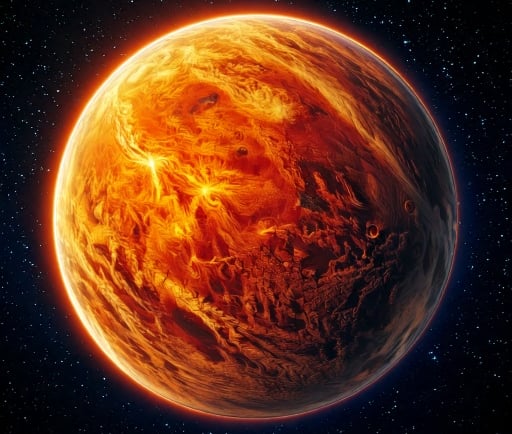The PSR B1257+12 B: The Extra Solar Poltergeist Planet


Introduction to PSR B1257+12 B
PSR B1257+12 B, aptly nicknamed the Poltergeist, is an intriguing extrasolar planet located approximately 2,300 light-years from Earth in the constellation of Virgo. This discovery marked a significant milestone in astronomy, as it was one of the first planets discovered orbiting a pulsar in the early 1990s. The unique aspects of PSR B1257+12 B contribute to understanding planetary systems beyond our own.
The Characteristics of the Poltergeist Planet
PSR B1257+12 B is a fascinating example of a rocky exoplanet. Its mass is comparable to that of Earth, which raises questions about the potential for geological activity and atmospheric conditions. The planet orbits its pulsar, PSR B1257+12, at a mere distance of about 0.19 AU (astronomical units) — significantly closer than Mercury is to our Sun. Such proximity results in extreme radiation from the pulsar, creating an environment that challenges the concepts of habitability that we understand.
Significance of the Discovery
The discovery of PSR B1257+12 B marked a new era in exoplanet studies by showcasing the diversity of planetary systems throughout the universe. The Poltergeist planet, along with its companions, suggests that planets can form in a variety of scenarios, including around pulsars, which are remnants of supernova explosions. This discovery not only expanded the scope of astrophysical research but also initiated discussions about the potential for life in harsh conditions.
The presence of PSR B1257+12 B and its complex dynamics raises critical questions regarding planet formation theories. Researchers continue to explore how planets can withstand the tumultuous environment surrounding pulsars, particularly the intense radiation and magnetic fields. Examining the properties of these distant worlds enriches our understanding of the universe and our place within it.
In conclusion, the Poltergeist planet PSR B1257+12 B is more than just a distant object of study; it embodies the mystery and complexity of planetary systems in our universe. As technology advances and our observational methods improve, we look forward to unveiling even more secrets held by this extraordinary world and others like it.
